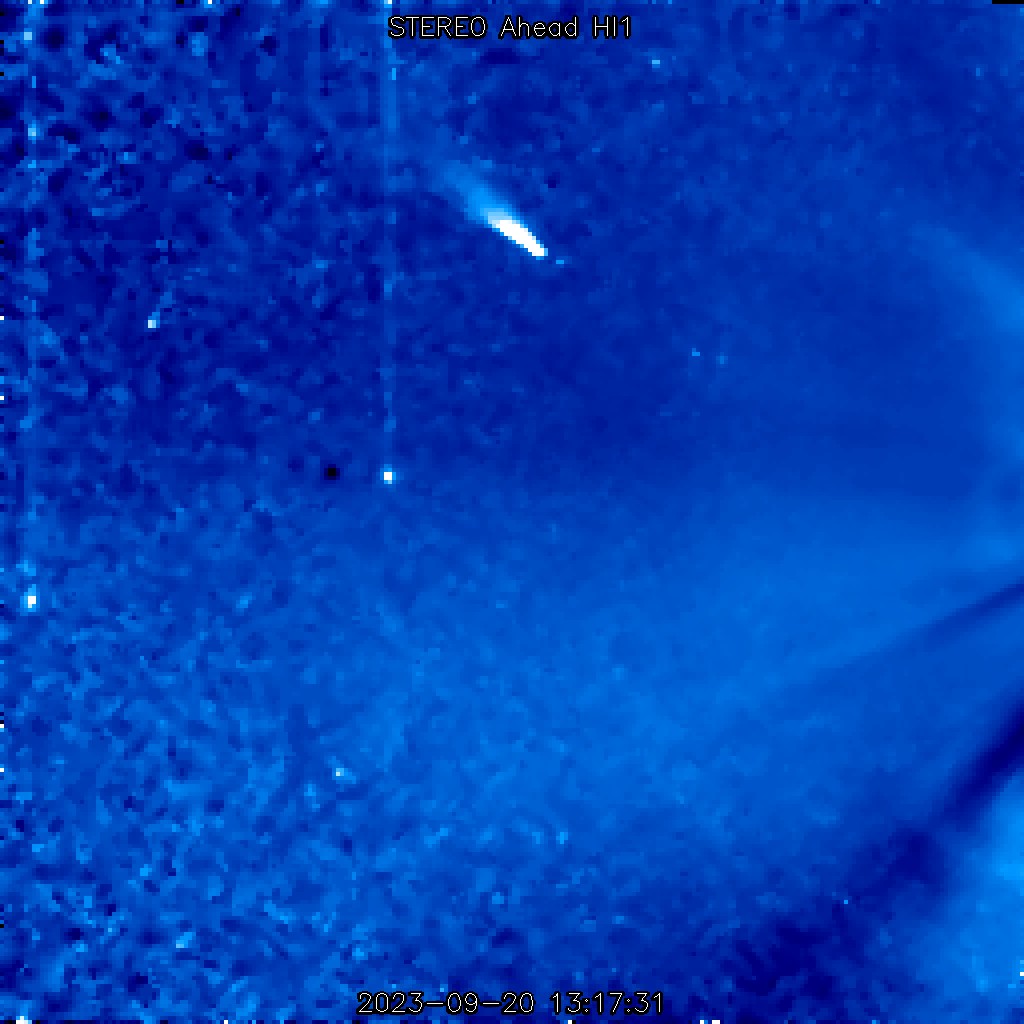The recently discovered green comet Nishimura survived its recent closest pass to the Sun, which is good for the comet but bad for us. It means soon we won’t be able to see it and it won’t come around again for another 437 years, so you’ll need to be quick to catch a last glimpse.
Comet Nishimura, or to give its full name, Comet C/2023 P1 (Nishimura), was first spotted on August 12 by amateur astronomer Hideo Nishimura (the third to his name), and since then astrophotographers around the world have been having a whale of time capturing its distinct photogenic green color and long thin tail.
However, the comet takes 437 years to do a lap around the Solar System, and since it has already passed its closest approach to the Sun it is now on its way to the outer reaches of our Solar System, and the window to spot it is closing.
Comets have huge tails that can stretch for millions of miles, but their nucleus is a solid “dirty snowball” of ice and dust. This means they brighten as they get closer to the Sun, the ice heating up and the space rock spewing out a charged gas called plasma that becomes its tail. However, also being close to the Sun means we can’t see past its glare so while it was at its closest approach, passing within 33 million kilometers (20.5 million miles), we lost sight of it.

Comet Nishimura photobombs NASA’s STEREO-A spacecraft as it was taking images of the Sun’s corona on September 20.
Image credit: NASA/Stereo Science Center
In fact, during this turbulent time for the comet, it was hit by a solar storm which briefly blew away its tail of plasma. But it’s back, and Nishimura is still visible with a telescope and binoculars. In the Northern Hemisphere, look low in the west after sunset in the evenings. The Southern Hemisphere will have better viewing, also low after sunset but it will get steadily fainter over the next few days.
Comet Nishimura won’t be seen in our skies again until 2458, and neither sci-fi technology nor space exploration is quite there yet for you to still be around to see it, so it might just be worth going outside to try to catch a glimpse of this celestial visitor before it’s too late.
Source Link: This Is Your Last Chance To See Green Comet Nishimura For Another 400 Years